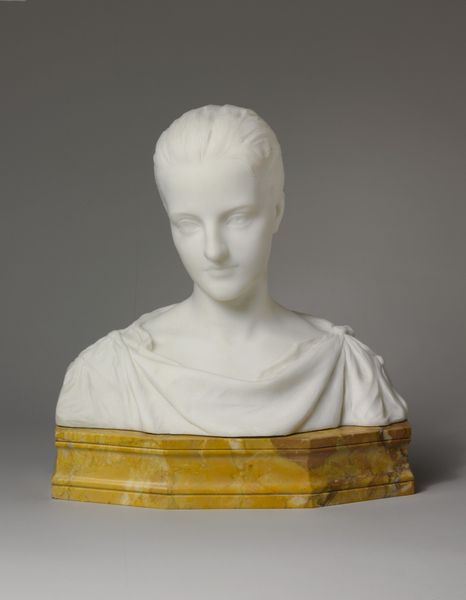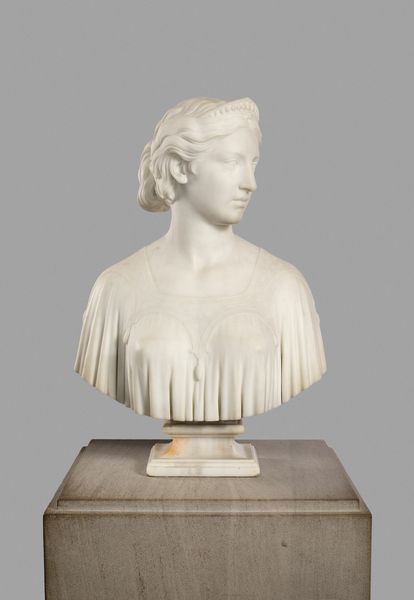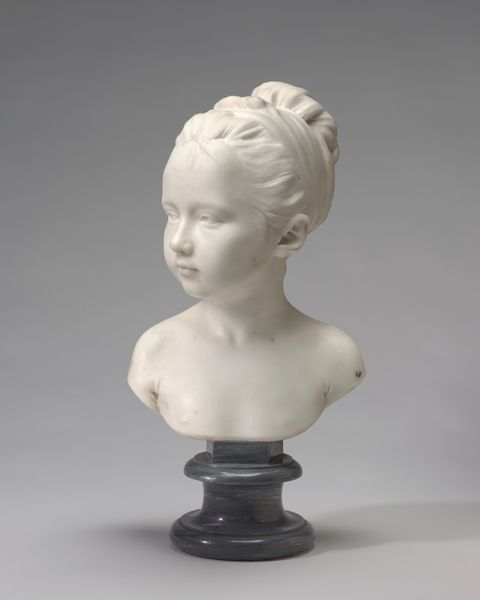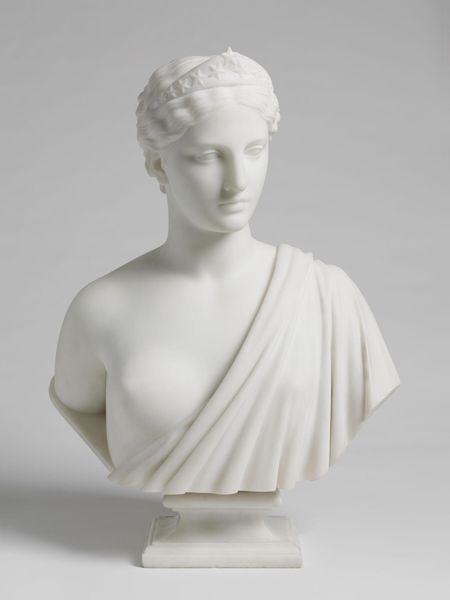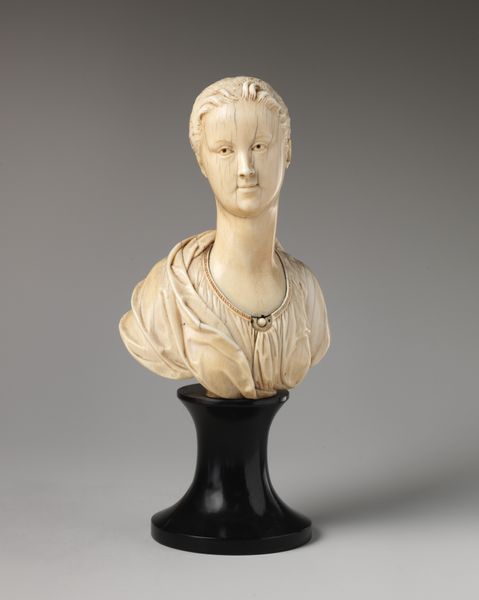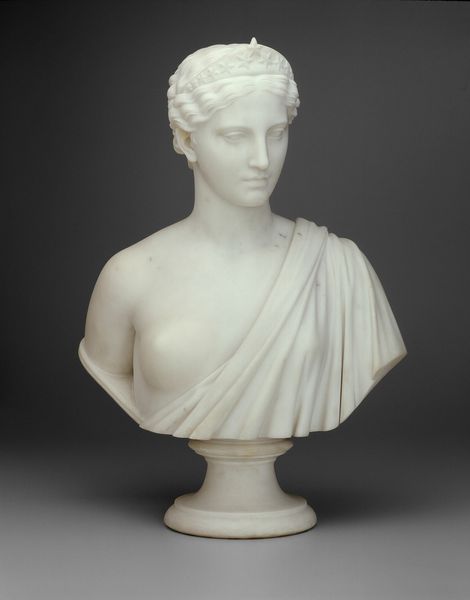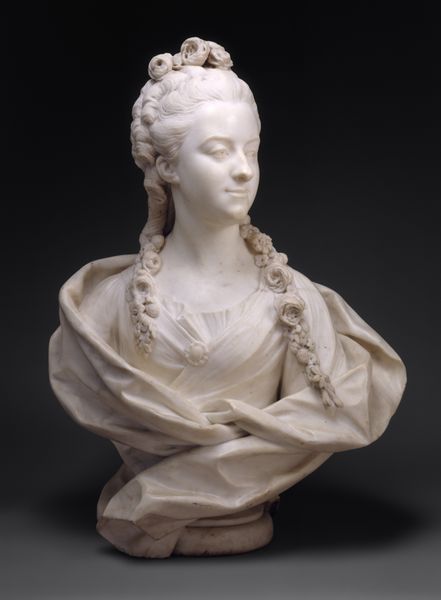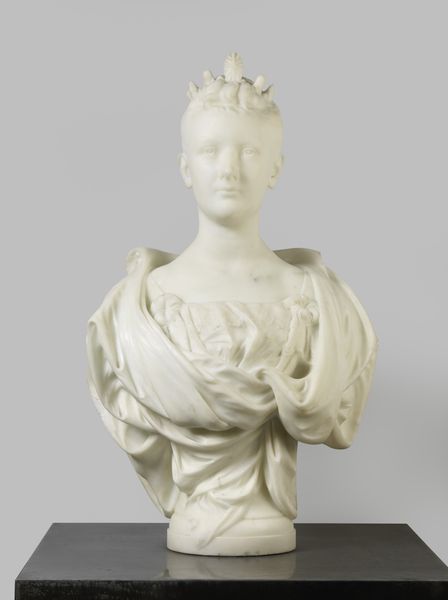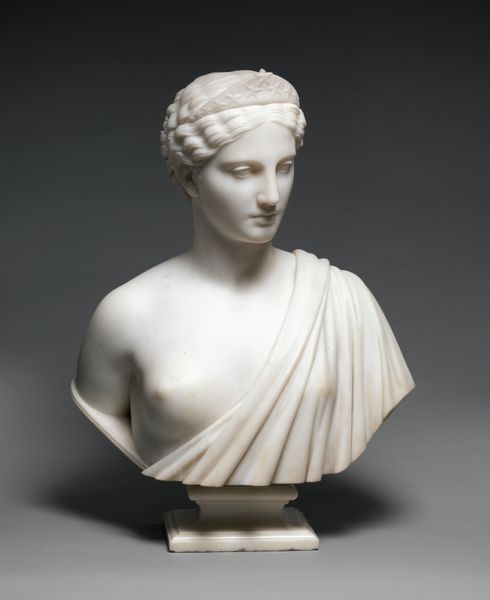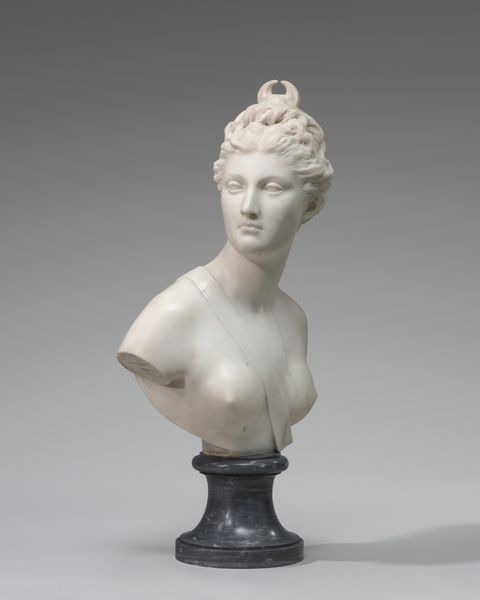
Dimensions: 22 x 15 1/2 x 10 in. (55.9 x 39.4 x 25.4 cm)
Copyright: Public Domain
Curator: Standing before us is Augustus Saint-Gaudens's marble bust of Louise Adele Gould, created between 1894 and 1895. It resides here at the Metropolitan Museum of Art. Editor: There's an undeniable serenity to her, almost melancholic. The delicate drapery lends softness to the hard marble, doesn't it? Curator: Indeed. It speaks volumes about the process Saint-Gaudens employed. Consider the sheer physical labor involved in carving marble with such precision, such refined realism! It also reflects the culture of skilled artisans at the time. Each cut represents hours of dedicated work and the weight of expectation from the Gilded Age elite, who commissioned such works. Editor: The way she gazes downwards hints at something deeper. Portraiture of young women often played into societal expectations. The 'Gilded Age' also saw the burgeoning women's rights movements, perhaps here it is also the subject being pensive and thoughtful as a mode of portraying intelligence during the dawn of progress. We can ask if this captures more than mere societal portraiture; could it represent intellectual depth. Curator: Good point! Saint-Gaudens carefully selects marble, it needs to be flawless. What are your thoughts on this decision? He isn't simply producing art; he's crafting luxury for a consumer base. Also how do these pieces end up in museums? Who owned it? And who benefits from having access to view it now? Editor: We can interpret Saint-Gaudens's focus on the natural and almost idealize features within the bounds of what could have actually existed to celebrate his sitter. It is as if Gould could act as an ideal, representing women pushing the bounds of expectation. So do we see art as complicit, in offering a kind of restricted form of liberty or empowerment through art. The Neoclassical artistic movement valued social structures so even if it means a break in norms there can only be so much progress while valuing and upholding old customs. Curator: Right, even in its realistic rendering and classical echoes, there is also a dialogue about value and labor. Every smooth curve tells a story of careful refinement under both an individual artist's hands and broader labor practices to extract and refine material. Editor: A worthy addition to the museum, it has given us a chance to meditate on society, material, labor, and liberty within our art history and progress. Curator: Exactly, and next, let's look at...
Comments
No comments
Be the first to comment and join the conversation on the ultimate creative platform.
